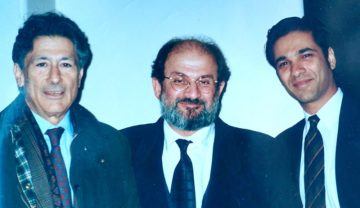Jackson Arn in Forward:

You could read any of Edward Said’s books, but you couldn’t take them home with you. Looking back, this was obviously a metaphor for something or other. At the time it seemed like a simple-enough fact—but then, I was only a freshman.
The Edward Said Reading Room opened in the spring of 2011, eight years after Said died of leukemia and a few months before I started college at Columbia. I liked it because it was small enough to pace through without losing sight of my laptop, and because the late professor had had fantastic taste in books. There were about 2,000 of them on the shelves, all from his personal collection and spanning most of his favorite subjects: Arabic modernism, classical music, the Frankfurt School, the two-state solution, the 19th-century realist novel. If book collections are always self-portraits, this was the grandest self-portrait I’d ever seen. So, no: students weren’t allowed to check these books out of Butler Library — that would have chipped the paint.
Said taught literature at Columbia for 40 years. During my four as an undergrad, he came up so often it felt like he still did.
More here.
